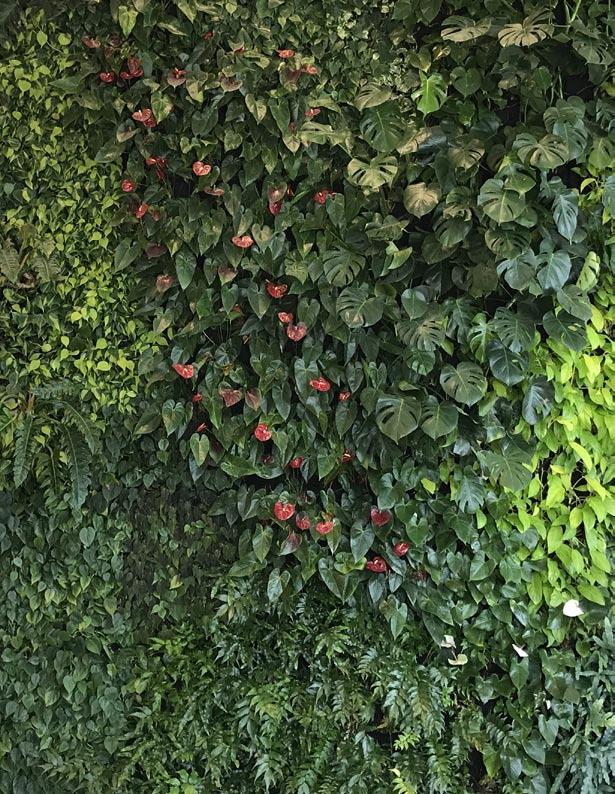
NOVEMBER 2022 VOL. 17 NO. 9 WWW.WASHINGTONGARDENER.COM Welcoming Carolina Chickadees Great Gardening Books Reviewed How to Make Your Holiday Tree Last Longer The Look of Christmas Without the Tree Meet the Cook Sisters Common Crickets New Jacob’s Ladder ‘Golden Feathers’ DC-MD-VA Gardening Events Calendar Optimizing Urban Environments How to Grow American Persimmon Tree the magazine for gardening enthusiasts in the Mid-Atlantic region WASHINGTON g a rdener A Living Wall
Barry Glick
Sunshine Farm and Gardens




696 Glicks Road


Renick, WV 24966, USA
Email: barry@sunfarm.com www.sunfarm.com
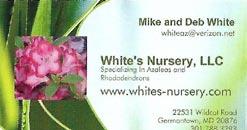

7304 Carroll Avenue, #229 Takoma Park, MD 20912 301-270-4642 yardmakeovers@yahoo.com www.yardmakeovers.com
Washington Gardener Magazine’s staff and writers are available to speak to groups and garden clubs in the DC region and ONLINE! Call 240.603.1461 or email KathyJentz@gmail.com for available dates, rates, and topics.
Green Spring Gardens
A “must visit” for everyone in the met ropolitan Washington, DC, area. It’s a year-round goldmine of information and inspiration for the home gardener. It’s an outdoor classroom for children and their families to learn about plants and wildlife. It’s also a museum, a national historic site that offers glimpses into a long, rich history with colonial origins. Located at 4603 Green Spring Rd., Alex andria, VA. Information: 703-642-5173.
2 WASHINGTON GARDENER NOVEMBER 2022 RESOURCESsourc
Specializing
Garden Renewals & Renovations Yard By Yard
www.greenspring.org
in
Makeovers, LLC
We can reshape and beautify neglected yards. ooo o
Garden
o o Need a
Club Speaker?
Your Ad Here Contact kathyjentz@gmail.com or call 301.588.6894 for ad rates The ad deadline is the 10th of each month. Please submit your ad directly to: KathyJentz@gmail.com Ask Maryland’s Garden Experts extension.umd.edu/hgic ����������� ������� ��������� ���� ����� ���� �� ����� ������ �� ����� ����� �������� ������ ������������������� ������������������������������������� ��������������������� ������������������������ Summer Creek Horticultural Soil Mixes HiDra2-Seed Starter MultiMix2–Raised Bed Mix Organic - Local Sustainable Pro Grade Most sustainable horticultural mixes available. Available at Mom’s, Direct & select ACE Hardware www.summercreekfarm.com - Thurmont, M aryland
RARE AND EXCEPTIONAL PLANTS FOR THE DISCRIMINATING GARDENER AND COLLECTOR

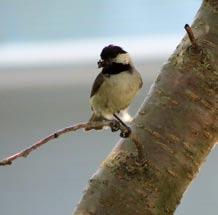

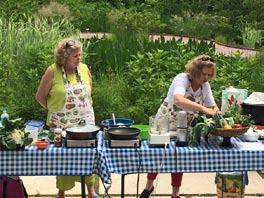
NOVEMBER 2022 WASHINGTON GARDENER 3 FEATURES and COLUMNS BIRDwatch 22 Carolina Chickadee BOOKreviews 18-20 American Roots, The Kitchen Garden, Seven-Step Homestead, Dead Cereus, First Time Homesteader DAYtrip 14-15 M-NCPPC Living Wall EVENTreport 6-7 Optimizing Urban Environments INSECTindex 21 Common Crickets NEIGHBORnetwork 8-9 The Cook Sisters NEWPLANTspotlight 11 Jacob’s Ladder ‘Golden Feathers’ PLANTprofile 12 American Persimmon Tree TIPStricks 10 Waxed Amaryllis Bulbs, Holiday Tree Selection and Care DEPARTMENTS ADVERTISINGindex 23 BLOGlinks 11 EDITORletter 4 GARDENDCpodcasts 15 LOCALevents 1 3 MONTHLYtasklist 11 NEXTissue 3 READERcontest 5 READERreactions 5 RESOURCESsources 2 ON THE COVER The BioWall in Wheaton, MD, at the M-NCPPC headquarters building. Photo by Sean Bodnar. In our December issue: Urban Balcony Garden Garden Books Local Garden Tours and much more . . . Be sure you are subscribed! INSIDEcontents o 8 21 Click on the “subscribe” link at washingtongardener.com Fall field crickets (Gryllus pennsylvanicus) burrow into soil in fields and forest edges. Photo by Kevinjudge, CC BY-SA 4.0 <https://creativecom mons.org/licenses/bysa/4.0>, via Wikimedia Commons. Got a Garden Question? Got a gardening question you need answered? Send your questions to KathyJentz@gmail.com and use the subject line “Q&A.” Then look for your answered questions in upcoming issues. 22 The Cook Sisters’ classes and demos cover everything from soup to nuts and include gar dening tips gathered from Adrienne Cook’s long history of growing food for the table. This Carolina Chickadee with a mouthful of moth demonstrates why birds are so welcome in our yards and gardens.
Planting Bulbs and Hope
The Silver Spring Garden Club recently planted 600 ‘Carlton’ daffodil bulbs at the Jesup Blair Park on the Maryland-DC border, purchased from Brent & Becky’s Bulbs. This annual club tradition honors war veterans. Over the years, the club has planted several thousand bulbs at the park and a number return each spring, but we still add more because the park maintenance mowing cycle affects how many are successful in coming back. Some years are better than others. We picked daf fodils in a recreation of a historic club planting of 10,000 of them at this park in the 1940s. We also chose daffodils because they are deer- and rabbit-resistant!
Planting these bulbs is an exercise in hope. Hope for the future and the promise of spring. Hope that the community members will enjoy the blooms and not damage them. Hope that the winter rains and snows will be sufficient, but not so frequent and strong as to rot the bulbs.
Note that the nine club members shown here who volunteered to do the planting are not “spring chickens.” Despite aching backs and creaking knees, the planting session was accomplished by this small group in under an hour! Many hands make light work, as they say. (I also realize that I look like a stuffed sausage in the photo above thanks to the five layers of clothing I was wearing that day in the unseason able cold temperatures.)
Planting spring-blooming bulbs in the fall is a promise for the future!
Sincerely, Kathy Jentz, Editor/Publisher, Washington Gardener KathyJentz@gmail.com

Credits
Kathy Jentz
Editor/Publisher
Washington Gardener
826 Philadelphia Ave. Silver Spring, MD 20910
Phone: 301-588-6894 kathyjentz@gmail.com www.washingtongardener.com
Ruth E. Thaler-Carter Proofreader
Brandie Bland
Jaime Breeden
Interns
Subscription: $20.00
• Washington Gardener Blog: www.washingtongardener.blogspot.com
• Washington Gardener Archives: http://issuu.com/washingtongardener
• Washington Gardener Discussion Group: https://groups.google.com/g/ washingtongardener/

• Washington Gardener Twitter Feed: www.twitter.com/WDCGardener
• Washington Gardener Instagram: www.instagram.com/wdcgardener
• Washington Gardener Facebook Page: https://www.facebook.com/ WashingtonGardenerMagazine/
• Washington Gardener YouTube: www.youtube.com/ washingtongardenermagazine
• Washington Gardener Amazon Store: www.amazon.com/shop/wdcgardener
• Washington Gardener BookShop: bookshop.org/shop/WDCgardener
• Washington Gardener Podcast: https://anchor.fm/gardendc/
• Washington Gardener is a woman-owned busi ness We are proud to be members of:
· GardenComm (GWA: The Association for Garden Communicators)
· Green America Business Network
· National Garden Bureau
· One Montgomery Green
· Ladies in the Landscape
· Perennial Plant Association
Volume 17, Number 9 ISSN 1555-8959
© 2022 Washington Gardener
All rights reserved. Published monthly. No material may be reproduced without prior writ ten permission. This magazine is purchased by the buyer with the understanding that the infor mation presented is from various sources from which there can be no warranty or responsibility by the publisher as to legality, completeness, or technical accuracy.
uncredited photos in this issue are © Kathy Jentz.
4 WASHINGTON GARDENER NOVEMBER 2022
EDITORletter
All
Your editor (front, all the way at left) with other members of the Silver Spring Garden Club in Jesup Blair Park in Silver Spring, MD.
Reader Contest
For our November 2022 Washington Gar dener Reader Contest, we are giving away 2023 garden calendars from Workman Publishing (value $16, workman.com).
Workman 2023 calendars are the per fect gift for the green thumbs and nature enthusiasts in anyone’s life. Workman introduces a whole new lineup of lively, garden-inspired calendars—along with new editions of old favorites.
The Cottage Love calendar celebrates these ideals with a year of gorgeous, fullcolor photographs. A quaint thatch-roofed cottage next to a flower-lined canal. A table set for a leisurely lunch in the garden. Nature-themed quotes that enhance the romance and sense of wonder. Printed on responsibly sourced paper.

To enter to win a garden calendar from Workman Publishing, send an email to WashingtonGardenerMagazine@gmail.com by 5:00pm on November 30 with “Gar den Calendar” in the subject line and in the body of the email. Tell us what your favorite article was in this issue and why. Please also include your full name and mailing address. Winners will be announced and notified on December 1. o
Your Ad Here
Are you trying to reach thousands of gardeners in the greater DC region/MidAtlantic area? Washington Gardener Magazine goes out in the middle of every month. Contact KathyJentz@gmail.com or call 301.588.6894 for ad rates (starting from $200). The ad deadline is the 5th of each month. Please submit your ad directly to: KathyJentz@gmail.com.
Reader Feedback
My favorite article [in the October 2022 issue] is about Amy Highland at Mount Cuba. I love plants and like her, the urge to explore nature came to me at an early age. I like reading about other garden professionals and how they came into horticulture as a career. I have been to Mount Cuba quite a few times and am always anxious to learn more about the research and collec tions there.
~ Marjorie Smith, Fairfax, VA
My favorite article in the July 2022 issue was on zinnias. I love their bright colors. I didn’t realize I could plant them in late July/August, so I will add more seeds to my garden now!
~ Sonia Hudson, Silver Spring, MD
The Caroline Hooks article is my favor ite from the December 2021 issue. What she discusses as a white, cisgen dered middle-class woman in the maledominated field of agriculture, which has a history of exploiting poor people of color, is something that resonates with me every time I pass a strawberry or tomato field in summer, seeing the stoop labor—invariably migrant work ers and people of color—that agricul tural interests depend on to supply the crops that feed America. When Caroline talks about the relationship of gardening to time and mindfulness, I relate: Gardeners are mindful and observant, working in their gardens in the present, but the act of planting seeds, transplanting seedlings to give them more room for growth, or pruning winter fruit trees for increased harvest months later is all about holding hope for the future. That’s why gardening is a rare and necessary source of optimism after 20+ months of living with this pandemic.

Plant a Row for the Hungry (PAR) is an easy program to participate in and really does not take any extra resources than what you may have in your garden. In nor mal times, about 35 million people wonder where their next meal will come from. Most of these are children. That’s where PAR steps in.
PAR is such a simple program: It urges gardeners to Plant A Row (or a container) dedicated to feeding the hungry, and then take the harvest to some place or someone that needs it. Once you have donated, send an email to KathyJentz@gmail.com with the total (in pounds and ounces) of what you gave. That is all there is to it. Easy. Effective. Adaptable and Helpful.
~
Jane
Auerbach, Los Angeles, CA
My favorite article [in the December 2021 issue} was “Holiday Plants for a Truly Green Season.” I was especially interested in reading about the Norfolk Pine Tree and orchids since I have those already and always like to get new tips on how to grow my existing plants.
~ Carol Yemola, Drums, PA o
NOVEMBER 2022 WASHINGTON GARDENER 5 READERcontt
READERreactions
Optimizing Urban Environments: An AGNR Cornerstone Event
By Brandie Bland and Jaime Breeden
The College of Agriculture and Natural Resources (AGNR) at the University of Maryland College Park (UMD) held their fourth annual cornerstone conference recently. This year’s conference was in person for the first time in two years due to COVID-19 and focused on opti mizing urban environments. The confer ence offered a variety of urban environ ment presentations with topics ranging from agricultural education in Baltimore to improving food resiliency on UMD’s College Park campus. Planning has begun for next year’s conference, which will focus on advancing innovative, profitable, and sustainable agricultural production systems.
Opening Remarks
AGNR Dean Craig Beyrouty and Univer sity of Maryland, College Park Provost Jennifer King Rice welcomed attendees and delivered the opening remarks for this year’s conference. Beyrouty high lighted the AGNR’s land grant mission to promote and provide proper food access and agricultural education to at-risk youth in urban environments.
“Many of our youth in metropolitan areas...have real serious issues with regard to accessing education and developing important careers following their educational and academic endeav ors,” Beyrouty said.
A part of the college’s strategic initia tive includes lucrative partnerships with agricultural professionals who provide education training and hands-on experi ence in Baltimore City schools.
“These strategic initiatives are very, very exciting,” Beyrouty said.
Many of these professionals present ed during the conference.
King Rice spoke about campus-wide support for the college’s mission and
UMD’s plan to help improve agriculture through education and innovation.
“Our campus strategic plan has also wrapped its arms around this mission,” King Rice said.
According to King Rice, UMD’s cam pus plan is called “fearlessly forward in pursuit of excellence and impact for the public good and centers on public good, a land grant mission, and dedication to the good of our state and our broader society.
“We’re really working toward a better society and world. And the work that you all do here is right at the heart of that so I want to thank you for that,” King Rice said.
Keynote: Kate Orff
Before a ballroom packed with hun dreds of students, colleagues, and other guests, landscape architect Kate Orff asked the room to consider what it meant to build for the future—not just erecting structures for the needs of the people of Earth, but for the Earth itself.
This isn’t a revelation for Orff. Con servative landscape design has been a founding focus for her work: She turns projects into messages of social recon nection and environmental reconstruc tion.
“For me, the landscape and think ing about a healthy, robust, contiguous mosaic of interconnected, healthy land scapes is truly a way to go, relative to bridging and thinking about the climate changes before us,” Orff said.”There’s that statement—if you’re a hammer, everything is a nail. I am the hammer of landscape.”
Throughout her talk, Orff described her recent projects in detail. Building plazas shaped to resemble coastlines with enough space for community gath erings, coastlines rebuilt to help the ocean’s at-risk populations rebound,
rebuilding marshes and wetlands to be better protected against future cli mate disasters while allowing people the opportunity to visit and experi ence ecosystems they may not have had before—all of this, Orff reiterated, graphed against a timeline of impend ing climate crises.
“You can design these things in Photoshop and then when they actu ally happen, it’s quite a mind-bender,” Orff said, “That is a huge labor of love. That is eight years. That is a fast-track climate project after a massive disaster. There’s a lot of change that needs to happen in a very short amount of time.”
Orff also understands that the key to keeping the future safe isn’t just to remake spaces to better fit the world, but to remake perspectives to better keep it healthy. Many of her projects, like Tom Lee Park in Memphis, TN, act as immersive classrooms, diagramming the ecology that a particular facility is inhabiting and teaching people about its own inhabitants.
“It’s a project that’s trying to reach way back into Memphis and celebrates Memphis’s relationship to the Missis sippi River. We even worked to develop a free downloadable curriculum kit that is basically a companion to the physical park,” Orff said. “You get hands-on, sci ence-based learning directly related to the physical environment.”
Orff explained that the intersection between people and their understand ing of what’s around them can be the best way to facilitate the practices necessary to foster long-term ecological recuperation.
“This is a way forward. It’s not just about having an idea and going to the community and saying, ‘Do you like this idea?’” Orff said. “It’s about setting up processes that truly interlock people with the physical landscapes that they will cherish and steward for the years to come.”
The talk wrapped up with a reminder to not only reflect on the topics pre sented today, but actually try to incorpo rate these ideas into the fabric of one’s life—not needing to create such large, elaborate structures to commence change but trying to be a force at a per sonal, local level.
“It’s time to get our hands in the mud.
6 WASHINGTON GARDENER NOVEMBER 2022
EVENT
report
Tending to and dwelling among our liv ing landscapes can start small: plastic pick-ups, piling up logs for habitat, gar dening with oysters, and pulling ivy from that patch of tulip trees down the block. We face a global landscape emergency. Let’s knit what we can back together.”
Urban Agriculture: Baltimore Lessons Learned
Neith Little, an urban agriculture exten sion educator for the University of Maryland College Park’s Baltimore City office, talked about her work with urban farmers in Baltimore City and other parts of the state. Extension is a depart ment within the agriculture school that ensures everyone in the state of Mary land benefits from the research and education that happens in the univer sity system.
While Little’s talk highlighted some of the lessons her office has learned through their work with urban farmers, most of it focused particularly on col laboration, which Little called essential to community work.
“Collaboration is so important for doing community work, and in particu lar, in urban communities when there’s such a large community,” Little said.
Through UMD’s urban agriculture extension program, Little works with local community leaders to create and further develop agriculture program ming that empowers citizens with the resources to grow their own food, curate their own green spaces, and learn about agriculture and the environment.
“We must navigate and collaborate, not just with farmers and gardeners, but also with community leaders, non profits, other educational institutions, city agencies, and policymakers,” Little said.
One of the lessons Little and her office learned through their work is that there is a lack of organizations centered on civic engagement that go into com munities to interact with members and leaders who are already doing the work.
“They’re already out there, scroung ing resources, starting after schoolprograms, building gardens, and they don’t have time to come make our work happen,” Little said. “We need to go learn what they’re already doing and figure out how we can put our pieces together.”
The second lesson Little learned is that collaboration is not a one-way street. For the extension program to be successful, Little brings education from the university to local communities and brings the communities’ collective needs to researchers and policy-mak ers to better serve the communities she collaborates with.
Through the collaborative work she does, Little has worked with Whitelock Community Farm, Allen AME Church, and Strength To Love Farm II and is piloting an urban nutrient certification program at Green Street Academy, a charter school in Baltimore City.
Little is also working with Baltimore City Arabbers to figure out a way to compost their horse manure. Arabbers are street vendors who use horses to pull carts of fresh fruits and vegetables throughout the city.
Creating a Balanced Sound Composition in Urban Green Spaces
Lauren Gray, a landscape designer, presented her thesis work on sound composition in urban green spaces. Gray’s work investigated sound as it exists in urban settings to see how it can be created in a way that is pleasing to humans.
Gray completed her research at the Kennedy Center and four parks in Washington, DC, during the height of the pandemic: Bernardo de Gàlvez Memorial Park, Triangle Park, Walt Whit man Park, and Rollins Park. At each location, Gray recorded natural sounds over multiple days and at different times.
“There were 24 recordings and 23 different sounds,” Gray said. Of the sounds recorded, Gray found that natu ral sounds were the most diverse while mechanical sounds were the most con sistent.
After collecting sound data, Gray began to examine the design of the soundscape to figure out what archi tectural or landscape objects affected sound in a particular location.
In Rollins Park, a water fountain and walls affect how sound is transmitted because as the walls keep sound out side the park from coming in and the sounds of the water fountain act as a deterrent to the human ear.
“The soothing sound of the water fountain is what humans tune into and, despite the harsh noise that is actually happening, you will hear less of it,” Gray said.
At Walt Whitman Park, plants and the solid ground made natural sounds harsher because sound travels faster through solid materials.
Bus shelters at Bernardo de Gàlvez Memorial Park act as sound sculptures to elevate the sounds of the road below the park that are above frequencies the humans can register. Despite the constant traffic below the park, it will sound quiet to humans.
“Overall, these explore different ways that sound and landscape can be designed and interacted with,” Gray said.
Another important variable Gray found that affects sound composition in urban green spaces is cultural identity. Some cultures incorporate music that tends to be played loudly. While some people will find it soothing, others may find it unpleasant.
The go-go music issue in the Shaw community in DC is a great example of this. While some residents argued that the loud music is a nuisance, others heard it as a familiar sound.
Gray’s research highlights that when the harsh sounds of urban environ ments are combined with the natural sounds of the environments, sound in landscapes becomes an important sym phony.
Barriers and Transaction Costs in Household Adoption of Rain Gardens
Dr. David Newburn, AGNR associate professor, presented his team’s find ings on the likelihood of homeowners in the Baltimore region converting part or all of their lawns to more ecologically friendly alternatives, like rain gardens or conservative landscaping.
Across the region, Newburn’s team, a group formed from several North American and international universities, surveyed 1,749 households, primarily determining the financial and opera tional barriers homeowners would face navigating variables within a prospec tive cost-share program for the renova tions.
NOVEMBER 2022 WASHINGTON GARDENER 7
continued on page 16 EVENTreport
The Cook Sisters Culinary Educator s
 By Brandie Bland
By Brandie Bland
a cooking duo who advocate for eating locally and seasonally. They started cooking together as part of a collaboration with the U.S. Botanic Garden and spend their time doing cooking demonstra tions around the Washington, DC, met ropolitan area. Outside of their work together, Danielle Cook Navidi runs her business, Happily Hungry, a nutri tion program that works with young cancer patients and survivors. In 2003, Adrienne Cook retired from her garden ing column at the Washington Post and now spends time curating recipes for the “Cook Sisters” programs with the fruits and veggies she grows in her garden.
Tell us about your background: Where did you grow up, what was it like growing up together, what was your family like, did you both always do things together?
Adrienne Cook (AC): There were seven of us, so Danielle and I didn’t grow up together. We’re 14 years apart, so I was 17 and headed to college and she was only 3. We didn’t get to know each other as siblings until Danielle became an adult. There were no stories of us
sharing cooking experiences growing up. What we shared was a mother who loved to cook. And we both have great memories of that. I think a lot of what we do today comes from that experi ence of being with her in the kitchen. Danielle Cook Navidi (DCN): Our par ents were expats and left the United States to go overseas. My dad was a war correspondent stationed abroad, so we moved around Europe a lot, and all seven kids were born in different parts of Europe. Adrienne’s experience growing up was, they moved houses and countries a fair amount, but by the time I came along, my mother had gotten really tired of packing up and moving every two years, so they settled in France. My entire upbringing was in France, whereas Adrienne lived in France for a while, England for a while, and Germany.
How did you become interested in cooking and gardening?
AC: We grew up that way partially because when I was growing up, there were no supermarkets in France. We really did have to rely on seasonal cooking because you just couldn’t go to a supermarket and buy fresh apples in the middle of wintertime. It was defi
nitely part of the DNA of how we grew up out of necessity and we still practice that today as much as we can.
DCN: Because of our upbringing in Europe, I think we developed a real love of food, particularly through our mom, who was very open and eager to learn cuisines wherever we lived. During the France years, I’d go to the market with my mother and she would go two or three times a week. I learned to understand the value of seasonal foods and eating seasonally, and that’s something that Adrian and I have always been doing and is a major point to our program.
What is your favorite cuisine to cook? What is your favorite thing to grow?
AC: What I love to do is to grab some thing out of the garden, bring it in, and look at a pot and decide what I’m going to do right then and there with it. I love to just simply take very fresh things right out of the garden. It’s my favorite way to cook because it’s ready. It’s easy. You don’t have to go shopping for anything and it’s always really primo when you do that. You know you’re get ting the best vegetables at their abso lute prime and their freshest.
DCN: We keep abreast of what is going on out there just because we enjoy it so much. This is a big part of our daily interest of reading blogs and flipping through magazines, and just being really clued into who’s coming onto the scene. There isn’t any one particular style of cuisine that we could relate to that is our niche. I think we’ve become better cooks because of the general interest we have in global cuisines. There isn’t a dish that I fall back on ever because I do so much that is sea sonally driven.
Tell us about your work together?
AC: I wrote a garden column for the Washington Post for many years and so I was somewhat in demand at dif ferent venues. Brookside Gardens was one of my primary clients early on, and then I also did a show on Maryland community television. I had fairly con sistent appearances doing gardening demos at different places and venues around DC, and someone asked: Would you be willing to do a cooking demo? I said okay and I realized right away that
8 WASHINGTON GARDENER NOVEMBER 2022
The Cook sisters—Adrienne Cook and Danielle Cook Navidi—are
NEIGHBORnwork
doing it by yourself is a huge amount of work, so I started looking around for a partner and asked Danielle to come help me, and it just evolved. Then the U.S. Botanic Garden took us on twice a month for 10 months and we were doing gardening clubs and events at different venues around the city. We went from doing a lot of gardening demos, which is a lot harder because you have to have a garden—you can’t just take it somewhere—to the two of us cooking. It worked out really well and I wrote about it for the Post also.
What has been the most challenging and most rewarding thing about work ing together?
AC: I can’t think of any real challenges. It’s hard work. I mean, we’re hauling stuff all over the place. And this is one of the things Danielle is so good at. She’s gotten this down to an absolute science of being able to load the car and knowing exactly what she needs for everything. And she’s always got everything ready. That’s a big challenge for me as I’m always forgetting some thing, but she usually has whatever I forgot in her load. Working together has been wonderful. We fight a lot, we laugh a lot, and she bosses me around. And I think the audience kind of enjoys that interaction.
DCN: I think personality-wise, we click and work extremely well together in the kitchen. We have a sixth sense of what needs to happen and over the years, we’ve gotten really good at anticipating what we’ll need. We spent a lot of time preparing for our presentations. We will get on the phone and sometimes it’ll be two-hour conversations of bat tling back and forth ideas, researching, and pulling up old recipes. One of the things that Adrienne is so fabulous at is she knows her garden. She knows the seasons and what we’re going to be able to get hold of in markets. I’ve gotten better at understanding that because we’ve worked together for so many years, but she’s really been the lead on selecting topics.
Do you have an influence or hero that inspired you to do the work you do?
AC: My mother has been an inspira tion for me and the roots of what we do come out of the experiences we
had with her for me. It’s like the refer ence point. I would say that in terms of enduring influencers, people like my mother.
Julia Child is another one. She actu ally overlapped with my parents while they were in France. They were doing some similar work, although my par ents were never spies, at least as far as we knew. She was a big influence because I understood French cook ing and so I was able to use what she wrote and apply it to what was avail able here in the United States.
DCN: I would have to agree with that, I think Julia Child was definitely an early influencer. When I first used Julia Child’s cookbook, it felt like our mother was actually talking to me. I think if Mom had taken a career in that direc tion, those would have been the kinds of books she would have produced or written.
How do you like to spend your free time?
AC: You’d probably find us shopping for the garden or the kitchen.
DCN: The garden and the kitchen take up a lot time and those are two hob bies we enjoy doing. I like to travel and try to get back to France whenever I can.
What are your favorite places to buy and eat locally?
AC: The variety of stuff at farmer’s markets in DC and Takoma Park always amazes me because I can’t possibly grow all of it in my little garden. Even with a particular vegetable, the range of colors and varieties that you can find at a farmer’s market is more vast than anything you can grow yourself, even if you’ve got a big community garden. Farmer’s markets are my go-to place if I have a couple of hours to kill and I want to really experience something.
DCN: I can’t give you the name of a restaurant that I’ve been to because I don’t eat out that much. I’m always touting for people to go visit local farmer’s markets. I think there’s a lot to learn just by meandering through the Dupont Circle market on a Sunday morning. So many farmer’s markets have popped up across the DC that you can certainly get out and visit one, and pick up some vegetables that you don’t
recognize and figure out what you’re going to do with them.
What cooking or gardening tips or tricks do you have for our readers and their kitchens or gardens?
AC: For gardening, I would say go small. Have a small plot and if you can’t grow something one year, grow it the fol lowing year. You only need one tomato plant; you don’t need a second one to pollinate it. You only need one square foot for beans where you can plant them intensely and pick what’s there. If you decide you’re going to do zucchini, plant them somewhere outside the garden, because they’ll take over the entire plot otherwise. Don’t just start small; stay small. You’ll enjoy it much more.
DCN: I like the mantra “If you can taste, you can cook.” Often, I’ll get the ques tion, How do I make a recipe really pop? I believe the success of making a recipe really come together is to do the balancing act of having the right sweet, sour, salty, and creamy. I’ve often described it as like four legs of a chair. Having the right fat, which also gives you the creamy component—it can be an oil, an actual cream, or butter. The salt obviously being salt itself or a sub stitute, which would be herbs or some lemon. Citrus, vinegar, or lemon adds the acidity or sourness. And then the sweetness, which is not added sugar because there’s natural sweetness that comes from a lot of the vegetables and fruits that you’re working with. If you need to add in sweetness, it can come from something like a touch of maple syrup in tomato soup. There’s no rea son that food or a recipe should come out flat. Those four components are what is going to make you a good cook.
How can our readers get in contact with you?
The “Contact us” form on our website is the best way to reach us. Our website is cook-sisters.com. o
Brandie Bland is a senior multi-platform journalism major in the Philip Merrill College of Journalism at the University of Maryland, College Park. She is an intern this fall with Washington Gardener.
This interview has been edited for length and clarity.
NOVEMBER 2022 WASHINGTON GARDENER 9
NEIGHBORnwork
How to Make Your Holiday Tree Last Longer
Did you know Americans bought 26.2 million live Christmas trees to decorate last year, to the tune of about $2 bil lion? Whether families have already purchased a tree or are still looking for the perfect pine, Scott Diffenderfer, an arborist at Trees.com, brings you the best tips to purchase and preserve your Christmas tree this holiday season.
• What should people look for when buying a real Christmas tree?
The fresher, the better! It’s important to be sure your tree is fresh-cut. If pos sible, go to a “cut your own” Christmas tree farm. If you get a tree delivered or shipped to your home, try to find out if it’s sent as soon as it’s cut. You do not want a tree that’s been cut two or three weeks before you buy or receive it. Fresh-cut trees will last longer and pro vide an aroma that adds to your holiday pleasure, too.
• What kind of tree should I buy?
There is a top 10 list for everything and Christmas trees are no exception. Short, stout needles and sturdy branch es are perfect when you are hanging decorations. Balsam fir, Douglas fir, Fraser fir, white spruce, Norway spruce, and Scots pine are tried-and-true selec tions. If you prefer a softer-needled tree, the white pine is a good choice, but keep in mind this is a softer tree and the needles are not as sturdy as those previously mentioned; the limbs tend to bend or “weep” when weighted down. Something else to note: White pine is not as aromatic as the other trees.
• What other tips do you have for tree care?
The single most important consider ation for the care and longevity of your tree is water. The second and third most important tips are water, too! When you get your tree home, cut about ½" of the trunk off and get it in the stand as soon as possible. Keeping the vascular system of the tree open is the only way water will get into the tree. If you let the water dry up, these bundles will close, and the water will stop mov ing into the tree. Check the tree daily by bending a needle or two, if the needle is flexible and moves without breaking, all is well; if the needle snaps when you bend it, the tree has dried out. This
means you could have a significant fire hazard, not to mention a mess when you take the tree down. Lights can add to the problem of drying due to the heat they emit, but the newer LED lights reduce this issue. LEDs also reduce fire hazard.
• What is the best way to dispose of a tree?
Ideally, you can dispose of your tree by recycling. Many communities set aside a day for this and have a tree chipper available that will turn the trees into wood chip mulch. If not and you burn wood, use the tree as kindling and fuel. Some other ideas include using the tree as a bird sanctuary or to create a shelter for fish in your water garden. These ideas are not always practical, but in a location where this is permit ted, they might be worth considering.
If you purchase a live tree (usually it comes as ball and burlap aka B&B, or in a container), you can plant your tree after the holidays are over. If you decide to take this route, it’s always wise to consider the temperature and site when you will plant the tree. Be sure the tree is acclimated to the tempera ture it will be planted in—if you live in a colder climate, it is best to hold onto the tree until spring and then plant it (this can be done by placing the tree in the garage during the dormant season). Keep in mind it will still be necessary to water the tree occasionally during this period. o
The Look of Christmas Without the Tree
Would you rather do without the tree, but still want to give your home that wonderful warm feeling of the season? Raise your hand! You aren’t the only one. This year, let waxed bulbs and bulb flowers take over the job of adding that holiday season sparkle!
It’s always time for family fun. Ho ho ho! You’ve heard the song on the radio for weeks: It’s the most wonder ful time of the year. Haul all of those boxes out of the attic because it’s time to turn the whole house into a cozy spot to celebrate the holidays. Time to snuggle in with family and friends, and enjoy seasonal delights like a cup of hot chocolate topped with whipped cream. But before all of this, go ahead and indulge yourself with something new
A great gift choice is a Waxed Amaryllis bulb. These bulbs are coated in decorative wax, making them pretty from the bottom up, so there is no need for a container. Everything these flowers need to grow is inside the wax. You don’t even need to add water. Huge tropical blooms will emerge within weeks of arrival, and all you have to do is watch the show unfold. This is the perfect gift for a friend who loves flow ers but can’t seem to keep plants alive. A Snowy Waxed Amaryllis Bulb in a decorative gift box sells for $39.95 from www. JacksonandPerkins.com.
this year. No, not a Christmas tree. This year, deck the halls with waxed bulbs and bulb flowers.
Waxed bulbs are flower bulbs covered in a layer of wax. Often, these are ama ryllis bulbs. The wax coating keeps the flower bulb from drying out, but it also adds a glamorous touch to the flower bulb: The wax comes in a wide range of colors, including gold, silver, black, red, and pink, and can also be dusted with glitter, tiny stars, artificial snow...the sky’s the limit. This makes the flower bulb a decorative accent that becomes even prettier as it grows and produces its beautiful bonus of wonderful flowers.
What home wouldn’t be jollier with flowers during the holidays? Some seasonal floral items are closely asso ciated with winter. Red or white tulips lead the way! When tulips are in a vase, their stems continue to grow. Watched over time, they can be seen as a living work of art. But what if you’d rather add other kinds of bulb flowers to your holiday spirit? Then choose from ama ryllises, hyacinths, anemones, or grape hyacinths.
Learn more about using bulbs and cut flowers in holiday decor at iBulb. com. o
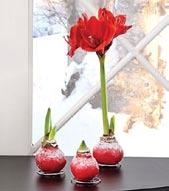
10 WASHINGTON GARDENER NOVEMBER 2022 TIPStricks
New Plant Spotlight
Jacob’s Ladder ‘Golden Feathers’ (Polemonium pulcherrimum)
Hardiness Zones: 5b–9a Hardiness Degree : -15°F (-26°C) Blooming Season: Summer, Late Spring Plant Habit: Mounded Characteristics: Shade-Tolerant, Attracts Bees, Colorful Foliage Water: Medium Fertilizer: Once a month Spacing: 10 13" (25–33cm) Height: 6 8" (15 20cm) Width: 12 14" (30 36cm)
Exposure: Shade Breeder: Darwin Perennials General Information: Add some showstopping color to your shade garden with this exciting golden var iegated Polemonium. Bluish-purple flowers are a bonus in the late spring to summer months. Plant in full to partial shade in well-drained, fertile soil. o

Quick Links to Recent Washington Gardener Blog Posts
• Frosty Returns
• Unusual and Specialty Flower Bulbs
• Hardneck Garlic Plant Profile
• How to Grow Celosia

See more Washington Gardener blog posts at WashingtonGardener.blogspot.com o
November–December Garden To-do List
• Switch your deer-deterrent spray if you’ve been using the same one for several months. Re-apply after heavy rains.
• Have your soil tested at least once every three years.
• Cover carrots and other root crops with straw to extend the harvest season.
• Deadhead spent mums and plant them if they are still in pots.
• Don’t panic over leaf/needle drop on established evergreen shrubs and rhododendrons. It is normal for them to shed a third at this time of year
• Bulb foliage already starting to surface? Don’t fret. It is also normal and will not affect next year’s blooms.
• Check for vole problems and set out traps.
• Caulk and seal your home to prevent wildlife from coming indoors.
• Protect fig trees from freezing by piling up leaves around them.
• Clean the leaves of your indoor houseplants to prevent dust and film build-up.
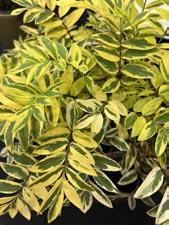
• Collect plant seeds for next year’s planting and for trading.
• Turn off outdoor water valve and store hoses.
• Store terra cotta pots in a shed or protected area.
• Prune and mulch hybrid tea roses.
• Harvest the last of your vegetables and till compost into the beds.
• Plant garlic for harvest next spring.
• Force spring bulbs for indoor blooms this January by potting them up, watering thoroughly, and placing them in your vegetable crisper for about 10 weeks.
• Remove this year’s fruiting raspberry canes down to the ground.
• Clean out your ponds and compost annual plants. Move hardy plants to deeper water. Cover with netting to block falling leaves.
• Clean, sharpen, and store your garden tools.
• Reduce fertilizing of indoor plants (except cyclamen).
• Set up a humidifier for indoor plants or at least place them in pebble trays.
• Vacuum up any ladybugs that come into the house and release outside.
• Rotate houseplants to promote even growth.
• Pot up Paperwhites and Amaryllis for holiday blooming.
• Water evergreens and new plantings to keep them hydrated this winter.
• Fertilize your lawn and re-seed if needed.
• Transplant trees and shrubs.
• Continue to divide and transplant perennials.
• Rake leaves, shred, and gather in compost piles.
• Start feeding birds to get them in the habit for winter.
• Attend a local garden club meeting.
• Turn your compost pile weekly and don’t let it dry out. Work compost into your planting beds.
• Plant evergreens for winter interest.
• Weed.
• Take a break from holiday stress to enjoy your garden.
• Do not place live wreaths or greenery between your door and a glass storm door, especially if the doorway is facing south. This placement will “cook” the arrangement on a sunny day.
• Sign up all your friends and family for garden magazine subscriptions as holiday gifts. o
NOVEMBER 2022 WASHINGTON GARDENER 11
GARDENnews
American Persimmon
By Kathy Jentz
The American Persimmon Tree (Diospyros virgin iana) is a small fruit tree that is native to most of the Eastern and Midwestern United States. It is also known as the Common Persimmon, Eastern Persimmon, Possum Apple, Possumwood, Winter Plum, Jove’s Fruit, or Native Persimmon.

It grows best in moist, sandy soils, but is fairly adaptable. It can tolerate light shade. You will need a nearby male tree to have a fruiting female one, although native cultivars available now are bred to be self-fertile, including ‘Yates’, ‘Prok’, and ‘Meade’.
This highly ornamental tree has oval leaves that are a glossy dark green. They turn golden yellow in the fall before dropping. The bark is dark gray and has an interesting texture that resembles alligator hide.
The Persimmon Tree’s fruit becomes orange to reddish-purple when it is ripe. Do not consume it until it has matured fully; you’ll know when it is ripe because the fruits will fall to the ground. Those who try to eat the fruits before they are ready learn their lesson—the bitter and astringent tannins will pucker up the mouth in a very unpleasant way.
The fruit is difficult to store and transport, so you will not commonly find it for sale. If you can gather enough, it can be used to make syrups, jellies, and puddings.
Persimmons are also consumed by birds, deer, raccoon, opossum, and fox.
The tree can be propagated from seeds or root cuttings. Due to its deep tap root, it is difficult to move or transplant once it is established. o
American Persimmon Tree (Diospyros virginiana), Rock Creek Park, Washington, DC, USA. Photo by Katja Schulz from Washington, D. C., USA, CC BY 2.0 <https://cre ativecommons.org/licenses/by/2.0>, via Wikimedia Commons.
12 WASHINGTON GARDENER NOVEMBER 2022 PLANTprofile
Kathy Jentz is the editor and founder of Washington Gardener
Classes, Events, and Plant Shows/Sales
• Friday, Nov. 18–Sunday, January 8
A Longwood Christmas
This year’s theme for the popular holiday display, Botanical Splendor, elevates plants and natural elements into artisan holiday décor that trans forms Longwood’s grand Conservatory and outdoor gardens into a holiday won derland. Towering trees glimmering with botanical ornaments, more than half-amillion dazzling lights artistically accent ing the landscape, strolling carolers bringing holiday cheer, crackling firepits adding warmth to cozy winter evenings, and plenty of merry opportunities are all part of the festive fun. Tickets are available now at longwoodgardens.org. Timed Tickets are required.
• Thursday, November 24, through Monday, January 2, 10am–5pm (closed on December 25)
Season’s Greenings
The U.S. Botanic Garden will offer a garden-wide holiday display this year. As part of the festivities, G-gauge model trains will run each day in the gated outdoor gardens and the conservatory will feature poinsettias, holiday decor, and DC landmarks made from plants. The garden will offer extended evening hours each Tuesday in December, when the conservatory and train display will be open until 8pm. Plan your visit at www.USBG.gov/SeasonsGreenings.
• Friday, November 25, 11am–1pm
#OptOutside Day at Oxon Run
Join Casey Trees for a walk to give thanks to nature and reconnect with neighbors, family, and community. Meet at James E. Bunn Amphitheater in Oxon Run Park, 1200 Mississippi Ave., SE, Washington, DC. Free. Register at https://caseytrees.org/events/list/.
• Tuesday, November 29, 7pm
Biological Control of Invasive Weeds
This presentation, hosted by the Mary land Native Plant Society, will provide an overview of the plant pathology research being performed at the USDAARS Foreign Disease-Weed Science Research Unit at Fort Detrick in Fred
erick, MD, and discuss several emerg ing pathogens of Mid-Atlantic invasive weeds and regulatory aspects associ ated with approving microbial-based biological control agents. Free. Held via Zoom. Register: http:// www.mdflora.org/event-5025208.
• Thursday, December 1, 12noon Outdoor Containers with Fresh Greens Join Peg Bier, Merrifield Plant and Design Specialist, for a Zoom webi nar as she covers the methods and techniques to create beautiful fresh greens container to decorate your front door, deck, or patio. She will cover the design process, as well as the tools and products you can use to ensure that your container gardens thrive through the holiday season and beyond. Free. Register at www.merrifieldgardencenter. com/online-classes/.
• Saturday December 3, 10–11:30am Black Flora: Profiles of Inspiring Black Flower Farmers + Florists African Americans and other persons of color in the floral marketplace are tell ing a rich, beautiful, and complex nar rative. It is long past time to recognize their excellence and contributions to cut flower farming and floristry. Garden writer, podcaster, and blogger Teresa J. Speight shares her interviews and pro files with leading pioneers and explores their lives rooted in the floral world. Hosted by Brookside Gardens online via Zoom. Free. Full details and to register, go to montgomeryparks.org.
• Tuesday, December 6, 9:30am 1st Annual Maryland Mushroom Growers
Symposium
This is a professional development sym posium designed for specialty mush room growers. This event is organized by the Urban Agriculture Program of the UMD Extension and sponsored by Hori zon Farm Credit. Held at the Maryland Department of Agriculture, 50 Harry S. Truman Parkway, Annapolis, MD. Fee: $12. Register at https://extension.umd. edu/news-events/.
• Thursday, December 8 through Satur day, December 10, 2–7pm
A Ladew Christmas
More robust than ever before and returning for the first time since the pandemic, Ladew Gardens in Monkton, MD, will host three days of dynamic Christmas traditions providing some thing for everyone to get in the holiday spirit—with old and new activities alike. Moments include the annual Greens Sale and a tour of the historic Manor House, adorned in festive holiday splendor. Fee: $15. See more details at LadewGardens.com.
• Saturday, December 10, 1:30pm (Repeated on December 18)
Wreath Workshops
Capture the warmth of Christmas this season by crafting your own historic wreath at Tudor Place in Washington, DC. No experience required. Workshop registration includes instruction and all materials needed for one wreath per participant. Fee: $55. Register at https://tudorplace.org/.
Looking Ahead
• Saturday, January 28 and Saturday, February 4, 12:30–4pm
Washington Gardener Annual Seed Exchanges
Washington Gardener Magazine is cohosting two annual seed exchanges, one held at Brookside Gardens and the other at Green Spring Gardens, with lectures and a face-to-face seed swap. Bring your extra seeds to swap and leave with a bag full of seeds, make new garden friends, and get expert planting advice. Fee: $20 ($15 for veri fied Friends group members and Wash ington Gardener subscribers). More details soon.
Event Listing Updates
See updated event listings on the Washington Gardener discussion list. Join by emailing WashingtonGardenersubscribe@googlegroups.com.
How to Submit Events
To submit an event for this listing, email washingtongardenermagazine@gmail. com with “Event” in the subject line. Our next deadline is December 5 for the December 2022 issue, for events taking place after December 15. o
NOVEMBER 2022 WASHINGTON GARDENER 13
TOP AREA GARDENING EVENTS
A Living Wall at the M-NCPPC Wheaton Headquarters
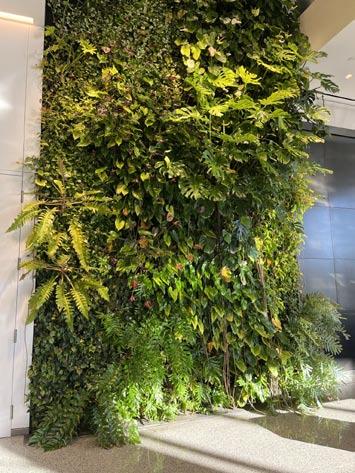
“We do receive lots of compliments,” said Judie Lai, chief of architecture and special projects for the M-NCPPC. “This is a big wow factor. Everybody notices we have happy plants on the wall.”
Lai recalled the decade-long process of planning and installing the wall, harkening to the previous headquarters building for inspiration.
“We used to be in Silver Spring. We had an atrium for plants and everyone loved to see the plants inside the build ing. When we moved to Wheaton, we wanted to see plants. We want to see natural things even inside a building. We want to see green.”
The new headquarters is a 14-story building on Reedie Drive near the Whea ton Metro Station. The building and sur rounding site replaces the county-owned Wheaton Market Place parking lot with a LEED Platinum-rated, mixed-use building, the Marion Fryer Town Square, and a 400-space public parking garage. Aside from the offices for approximately 900 government employees, it provides space for community gatherings and activities both inside and outside of the building.
Other green features of the 308,000square-foot office building include geothermal heating and cooling, green roofs, integral solar panels, gray water reuse, and on-site stormwater manage ment.
By Jaime Breeden
For nearly three years now, the Mary land-National Capital Park and Planning Commission (M-NCPPC) headquarters has been home to a veritable tropical forest in its main lobby. Like a massive terrarium in the center of Wheaton, MD, the living wall demands that people en ter the facility for the chance to get up close and personal with luscious foliage.
“There’s about 18 varieties in total—in door tropical plants as well as some ferns that fill that gap between peren nials and tropical plants,” said Sean Bodnar, BioWall stewardship manager at Furbish, the firm responsible for the green wall. “This gives you a really fine
definition between the plantings while the underlying hydroponics allow the plants to get to the massive size they are.”
Bodnar, who oversees maintenance for the vertical greenery, puts a lot of thought, time, and energy into the process of setting up these sorts of projects. He made it clear that these structures aren’t just an architectural statement or art installation, but an opportunity to bring new life into a previ ously uninhabited space.
“We want a long-lasting, evolving ecol ogy when we think about design, main tenance, and the purpose our product really serves.”
The green wall itself is actually two sections in the ground floor lobby. One part is horizontal and the other extends vertically to the second floor, roughly 1,000 square feet in all. The project was assembled as a structure composed of numerous 2.5x2.5 squares filled with plants raised in south Baltimore. According to Bodnar, the final construc tion job is a lot like a puzzle or, perhaps more accurately, assemble-it-yourself furniture.
“We’re not construction workers by trade; we’re really the finishing touches. The installation is to take a panel—it’s got numbers on it and letters, place it where it needs to go; and put two screws in. That’s the amount of labor I need to know.”
The green wall was a build job, Bodnar noted, that occurred at the height of the COVID pandemic.
14 WASHINGTON GARDENER NOVEMBER 2022 DAYtrip
“It was pretty interesting to work in a multi-trade, high-profile building. Dealing with other trades being around you, the pushback of COVID... we didn’t install this for roughly six months past when it was supposed to be delivered due to a restraint on materials and delivery. When it came to building it, though, it was a really smooth installation.”
What about the price for a structure like this? Bodnar sets the range for these sorts of projects anywhere from $150 to $300 per square foot, putting the price of this design around $15,000 to $30,000. The initial price point, Bodnar says, is lower than other the considerations for green walls, which
also includes installation and a period of monthly maintenance.
Maintenance largely consists of some pruning, cleaning, and pest-scouting, in addition to inspecting the filtration and mechanical systems underpinning. It’s a day’s worth of labor for a couple of guys on a cherry-picker, but it hasn’t been a two-person job for long.
“When we installed this project, it was me for almost two years running this by myself. I spent a full day here. Now I’ve hired a technician who comes out with me.”
Today, all of that work, planning, and pruning has created a stunning forest in the middle of a concrete jungle. Sur rounded by asphalt and steel, the wall stands like a monument to nature’s indefatigable character, and an opportu nity for folks from all over to experience greenery where stone, brick, and glass are the dominating elements.
“We appreciate this wall, you know. For people who work in the building, for the visitors when they come into the building, it’s a pleasant, welcoming feature,” Lai said. “We do public service and we want to welcome people to come into the building. The green wall represents that image.” o
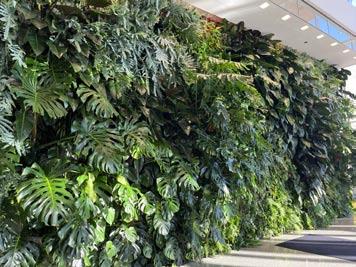
Jaime Breeden is a fourth-year journal ism student at the University of Maryland, College Park and an intern this fall session with Washington Gardener
The Urban Garden: 101 Ways to Grow Food and Beauty in the City IS OUT NOW!

By Kathy Jentz and Teresa Speight
Published by Cool Springs Press/Quarto Homes
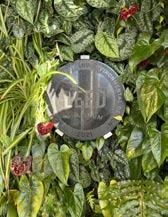
Order it today at: https://amzn.to/3yiLPKU
GardenDC Podcast
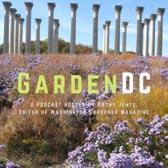
The GardenDC podcast is all about gardening in the greater Washington, DC, and Mid-Atlantic area. The pro gram is hosted by Kathy Jentz, editor of Washington Gardener Magazine, and features guest experts in local and national horticulture. The lat est episodes include interviews with experts on Raised Beds, Cover Crops, and Ornamental Grasses.
You can listen online at https:// washingtongardener.blogspot.com/ or on Spotify, Apple, etc o
NOVEMBER 2022 WASHINGTON GARDENER 15
DAYtrip
EVENTreport
Optimizing
“There are 48 different combinations of those plus different levels of pay ment. And this is an example where we’re just asking, ‘Would you enroll in this program?’” Newburn said. “We’re trying to figure out who’s more likely to enroll under different program types.”
Between home age, square footage of applicable lawns, rebates, and ease of application, the team left no stone unturned in trying to determine the most effective method for widespread acceptance.
According to Newburn, age, income, and education played a large factor in determining the likelihood of enroll ment. As age and education increased or income decreased, so did the proba bility of enrollment. Those surveyed also weren’t interested in paying out-of-pock et expenses, receiving rebates down the
road, or navigating final inspections and paperwork, which caused decreased interest in the programs.
“If it costs more, they’re less likely to enroll. If they have to pay the rebate, meaning pay it all upfront and then get a rebate, they’re less likely to enroll. If the subsidies are larger, they’re more likely to enroll. That’s basic economics.”
Based on such findings, the best way to gather interest was to decrease the cost to the consumer as much as pos sible with a cost-share program while streamlining the application and inspec tion processes to prevent any undue headaches for those trying to keep their properties as ecologically friendly as possible.
“We’re all very familiar with these things, but many households really don’t know a lot,” Newburn said. “It’s as much about the uncertainty. It’s not just the time; it’s the uncertainty of if this is going to be simple or onerous.”
Integration Stormwater Management into the Fabric of Communities
Professionals and students gathered to discuss green roofing and how it can not only provide much-needed stormwater utilization and valuable green space in largely grassless areas, but also offer invaluable sources of fresh produce to food deserts.
overview of the benefits of adding green space to the largely concrete jungle of urban environments: better managing urban heat islands to keep city tem peratures lower, improve the health of humans through access to natural envi ronments, and, as a method for protect ing from and using storm water runoff.
Using Ristvey’s overview as a spring board, Hansplant and Lea-Cox further extrapolated on the opportunity for rain water conservation and increased pub lic safety provided by converting urban roofs to gardens that would absorb and use a percentage of the water before it became hazardous in the streets below. Hansplant noted that while turn ing these spaces into plant-producing sponges or communal hubs, the estab lishment of green spaces on rooftops still has the potential for people to be kept out for myriad reasons.
“My experience has to do a lot with the interior architectural design: ‘Can I get on the roof without crawling through a hatch or going through someone else’s private space? When I’m out there, is there a guardrail up to code?’ I see a lot of roofs where people are just not allowed out.”
“Inspire. Connect. Grow.”
The National Garden Bureau is a nonprofit organization that exists to educate, inspire, and motivate people to increase the use of garden seed, plants, and products in homes, gardens, and workplaces by being the market ing arm of the gardening industry. Our members are experts in the field of horticulture and our information comes directly from these sources.
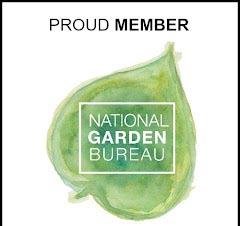
The panel featured plant science and landscape architecture professor Dr. John Lea-Cox; Principal Agent for UMD’s Wye extension; Dr. Andrew G. Ristvey, principal and director of design for Stu dio Sustena; and Laura Hansplant, cofounder of Up Top Acres, Kristof Grina.
Grina explained how he’s able to maintain consistent foot traffic to the newly green areas by offering freely available food for anyone looking for it. Grina’s company focuses on reusing that space to grow fresh produce for a building’s tenants.
“A lot of the properties we work on are office buildings. We also work on a lot of residential, a lot or apartment buildings, and a lot of those spaces are ‘pick your own’,” Grina said. “People actually can just come before their din ner and take the produce.”
Dr. Ristvey discussed the industry standards for the implementation of such ecosystems, while offering an
“So many of these rooms are not built with access in mind, so the work that you do is showing multiple benefits, particularly in terms of health, because I think COVID has taught us a lot about intentionally finding and taking the time to be healthy,” Lea-Cox responded. “Those spaces and urban areas are incredibly important.” o
Brandie Bland is a senior multi-platform journalism major in the Philip Merrill College of Journalism at the University of Maryland, College Park. She is an intern this fall with Washington Gardener.
Your Ad Here
Contact kathyjentz@gmail.com or call 301.588.6894 for ad rates
The ad deadline is the 10th of each month. Please submit your ad directly to: KathyJentz@gmail.com
16 WASHINGTON GARDENER NOVEMBER 2022
Jaime Breeden is a fourth-year journal ism student at the University of Maryland, College Park and an intern this fall session with Washington Gardener Urban Environments, continued from page 7
Find out more at https://ngb.org/
Brookside Gardens transforms into a magical winter wonderland for the annual Garden of Lights display. Stroll through the one-half mile, outdoor, walk through exhibit and enjoy the twinkling lights and glimmering one-of-a-kind displays adorning the flowerbeds and grounds throughout the 50 acre horticultural gem in Wheaton.
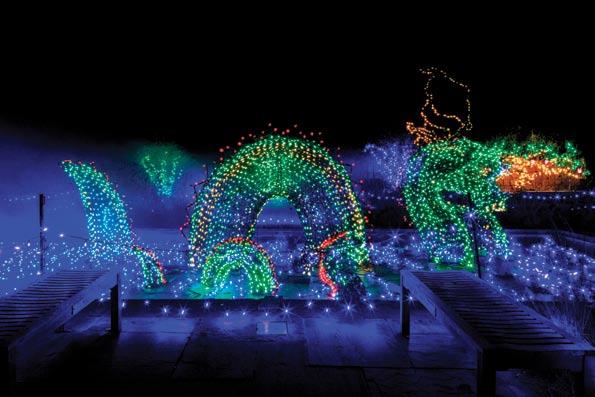
Shop for unique seasonal items at the Gift Shop Hot chocolate and light snacks available for purchase

Tickets: Timed-entry tickets available only at EventBrite.com beginning in October
$10 per person, ages 5 and older Visitors must arrive within their half-hour time slot
BROOKSIDE GARDENS 1500 and 1800 Glenallan Avenue | Wheaton, Maryland 20902 301.962.1400 | BrooksideGardens.org BROOKSIDE GARDENS
November 18, 2022, through January 1, 2023 (Closed November 21–24 and December 24–25)
The First-Time Homesteader: A Complete Beginner’s Guide to Starting and Loving Your New Homestead
Author: Jessica Sowards
Publisher: Cool Springs Press List Price: $26.99 Order Links: https://amzn.to/3tJux9N and https://bookshop.org/ a/79479/9780760372357
Reviewer: Brandie Bland
In The First-Time Homesteader, author Jessica Sowards delivers an authentic and warm welcome to the world of homesteading for those who are ready to ditch the pollution of urban living for the serene hard work of the home stead.

“I don’t want to talk to you about a trend or a fad. I want to talk to you about a worthy lifestyle,” Sowards said.
Sowards structures the book into eight step-by-step chapters dedicated to what you’d need to start your own homestead, from keeping bees to yard birds. The only chapter that doesn’t adhere to this format is the first one, which details the one thing every per son needs before starting anything: a plan. Because let’s face it, starting a homestead is not easy.
“Setting up your first homestead comes with many joys and many chal lenges. Whether you’re in the dreaming stage or coming to the table with land already in hand,” Sowards said.
In Chapter One, Sowards focuses on connecting with the reader and seeking the mutual understanding that either you’re dedicated to starting a home stead or you’re not. Homesteading is more than being able to grow food or
raise animals; it’s about the intimate respect of nature and all the resources we as humans are freely provided by the Earth.
Sowards started her South Carolina homestead with her husband Jeremiah and documents some of it in the book and on her social media accounts: Roots and Refuge Farm.
Throughout the rest of the book, Sowards homes in on the nuances of homesteading and offers advice and personal experiences from the begin ning of her journey.
Her best advice is to make sure you have the proper tools for all areas of the homestead. Sowards’ favorite area is the kitchen and one of her favorite tools is an enameled cast-iron Dutch oven.
Personal as well as informative book this is a family scrapbook of memories documenting Sowards’ commitment to passing on her homestead knowledge to the next generation of homestead ers. o
Brandie Bland is a senior multi-platform journalism major in the Philip Merrill College of Journalism at the University of Maryland, College Park. She is an intern this fall with Washington Gardener.
Dead Cereus
Author: Kira Seamon
Publisher: Amazon Press List Price: $7.99
Order Link: https://amzn.to/3OoXReV Reviewer: Jaime Breeden
Put yourself in the mind of a high school student. You’ve got a lot to worry about that no one takes as seriously as you do, things are constantly changing and developing both inside and out side, and you feel like the world’s got a “wanted dead or alive” poster with your face plastered on it. That anxiety of adolescence is the very thing books like Kira Seamon’s novel Dead Cereus seek to cure, offering an opportunity for kids to take a break from their own trials and root for an underdog.
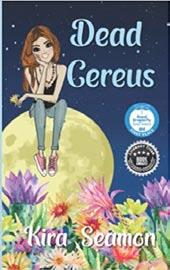
The story follows Holly, a horticultural student at Shellesby College aiming for a big internship in opposition to her rival Ivy and Ivy’s father Professor Berkley, who seems to have it out for her. Reliant on scholarships and con stantly getting into trouble, Holly is in jeopardy, but so is the life of others on
campus as a string of murders haunts the college. It’s up to Holly and her grad student boyfriend William to crack the case without getting Holly expelled.
This is Seamon’s debut novel, so I think it best to offer some compliments before tearing into the problems. For one, she has a knack for imagery. The ornate descriptions of the flowers adorning the greenhouse and the way scenes are described down to their smallest detail leaves plenty of mate rial for the theater of the mind to craft a stunning stage. It’s also not short on sharp turns in the plot, often leaving little time to wrap your head around goings on before plunging into the next event. And the story is fairly friendly, despite the subject matter. There’s mention of death and murder, but no gruesome details. The whole story feels like the script to a good Disney chan nel original movie if you grew up with those.
But like any first foray, this book has room for improvement. For one, the story, overall, doesn’t offer very much substance. The “mystery” isn’t terribly difficult to work through, seemingly no more than a string of reveals and twists that either create or fix problems instantly whenever necessary. Most of the characters have no clear arc, aside from Ivy to some degree. Holly herself gets the worst of this, coming
18 WASHINGTON GARDENER NOVEMBER 2022 BOOKreviews
off as childish, repeatedly told how to improve and succeed despite ignoring any advice from others. And the book had several sequences that go on for far too long or have logical/editorial inconsistencies.
Dead Cereus is, in all honesty, a bit of an easy punching bag. The plot’s thin conflicts are eliminated too quickly to build stakes, the willingness to give detail often trunks into tedious repeti tion of unnecessary details, and in several places, there are glaring editing mistakes or logical inconsistencies. Despite that, it has an exquisite eye for imagery, it knows how to make big swings with its story, and grants the reader a charming if naive, escapist fantasy that’s kind despite the context surrounding it.
It’s not the right fit for someone like me: a student in the last year of col lege preparing to face the cynical world outside academia, with bills, hourly wages, and workplace politics. But for the young person who just wants an adventure, a plucky young girl to root for, and twist after twist, it’s a fabulous treat that’s greater than its foibles.
Jaime Breeden is a fourth-year journal ism student at the University of Maryland, College Park and an intern this fall session with Washington Gardener.
The Seven-Step Homestead, A Guide for Creating the Backyard Microfarm of Your Dreams
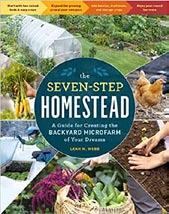
Author: Leah M. Webb
Publisher: Storey Publishing List Price: $24.99 Order Links: https://amzn.to/3AvXDgi and https://bookshop.org/ a/79479/9781635864113
Reviewer: Kaylee Steck
The Seven-Step Homestead is Leah Webb’s second book motivated by her passion to provide healthy food for her family. To her love of growing food, Webb brings knowledge of soil and food systems, honed with eight years of landscaping experience and degrees in environmental ecology and public health. In her latest book, she shows how curiosity mixed with motiva tion, practical knowledge, and a large dose of patience can help you achieve a diverse growing space fertilized by your own flock of chickens. While Webb
intends this guide for a range of ability levels, she reminds us that developing productive garden beds requires mul tiple years of commitment. Plan to work through the seven steps slowly!
Each of the seven chapters corre sponds to one of the homesteading steps. The first two chapters focus on mastering one or two small beds, then expanding your cultivation space and introducing more diversity. The third and fourth chapters explore options for planting your space, from fruit trees and shrubs to edible and flowering perennials. The fifth and sixth chapters explore topics related to sustainability, such as four-season growing and stor age crops. The final chapter considers the benefits and responsibilities of rais ing chickens on the homestead.
If all this seems overwhelming, the pages are filled with plenty of stepby-step instructions for a variety of projects, such as creating beds using sheet mulching, staking single-stem tomatoes, and constructing trellises. Webb also encourages the reader with personal stories about failures in the garden: “I don’t believe in brown thumbs. I believe that people give up prematurely. I have been gardening for 20 years…[and] I [still] screw some thing up then have to wait an entire year to try again.”
For readers who have already mas tered a few small beds, this book will offer support as you add more growing area, develop your planting skills, diver sify your plantings, and learn about soil aeration and mulching. If you are
thinking about adding fruit trees, the author gives you a head start with a fruit variety selection checklist, a table of general spacing recommendations for select trees and shrubs, and stepby-step instructions for planting and pruning fruits.
With each chapter, Webb’s breadth of experience becomes more apparent. From building beds to designing edible landscapes, this book covers a lot of ground. The photographs and illustra tions add inspiration for imagining your future homestead. If you enjoyed the 2018 documentary film “The Biggest Little Farm,” you will love this book. Get yourself a copy and don’t be afraid to think big, but start small! o
Kaylee Steck is a DC Master Gardener trainee and a volunteer gardener at Lafayette Park in the Chevy Chase neighbor hood of Washington, DC. She first gained experience with plants as an appren tice on a small berry farm in Ashfield, Massachusetts. She works with plant medi cine to support overall vitality as a holistic fertility awareness educator. You can learn more about her work on Instagram @capitalfertilityawareness.
The Kitchen Garden: Sowing, Growing, and Cooking for the Garden Enthusiast
Author: Lucy Mora
Publisher: Thames & Hudson List Price: $29.95
Order Links: https://amzn.to/3AujfK0 and https://bookshop.org/ a/79479/9781760762902
Reviewer: Marsha Douma
I feel the author accomplished her objective of providing the beginning gardener with the essential informa tion about the needs and character istics of most of the vegetables and fruits grown in today’s gardens in a very readable way. Most of the book is about vegetables, organized by plant ing seasons—spring, summer, fall, and winter. There is also a section for grow ing fruits, berries, and herbs. Sprinkled throughout are interesting recipes, which do give the book a more homey feel, as opposed to a more technical approach.
NOVEMBER 2022 WASHINGTON GARDENER 19 Book
page 20 BOOKreviews
Reviews continue on
The plants in each chapter are listed alphabetically and all this informa tion is summarized in an easy-to-use planting chart at the back of the book. This organization makes it easy to find information without having to read through entire chapters.
For every plant, in addition to the usual detailed information about how to grow it, there is a useful sidebar summarizing the seasons to sow and harvest, the growing time, spacing, sun requirements, frost tolerance, and plants it likes to grow near and those it dislikes.
Interestingly, the book includes the author’s advice for beginner gardeners: to start with plants from the nursery, instead of growing them from seeds, which is another level of complexity.

Since the author is Australian, some of her turns of phrases may be unfamil iar to American readers. Additionally, while temperatures are in Fahrenheit, measurements are in the metric sys tem—but there is a conversion chart at the back of book. Also included is some general information about how to get your garden plot started, insect and critter pests, composting, and mis cellaneous. home remedies to solve various garden problems. She also has a page describing how to re-grow some vegetables from their tops. I think I will have “a go of that.”
In summary, this is a visually inviting book full of easy-to-access information
to help make gardening successful for anyone. o
Marsha Douma is a retired dentist and life long gardener, who also enjoys swimming, tennis, and playing the piano. She lives in Rockville, MD.
American
Roots: Lessons and Inspiration from the Designers Reimagining Our Home Gardens
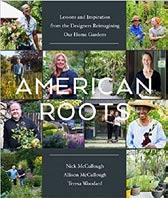
Authors: Nick McCullough, Allison McCullough, and Teresa Woodard
Publisher: Timber Press List Price: $40.00
Order Links: https://amzn.to/3EP9Cbm and https://bookshop.org/ a/79479/9781643261164
Reviewer: Jim Dronenburg
This book is a collection of descriptions of 20 designers’ gardens across the country. Organized by regions, these are far more photographs than text. The photos are very good and illustrate, for the most part, gardens in context, with some vignette/closeup shots of sculptural items and hardscape, as well as plants.
The gardens are divided into Midwest, East Coast, South, and West (including the Pacific NW), starting with the authors’ own garden in Columbus, OH. Each garden has a section for ideas (here, Scouting for Garden Finds; others include Designing with Annuals, Creating Vignettes, etc.) and each gar den has a section of Favorite Plants (a one-page square of nine photos of indi vidual plants, with identifying captions). Needless to say, some of the California and PNW gardens contain things that would not fare very well in the DC region (sigh). But the book is chockfull of ideas, some only applicable to a large space but most quite doable to almost any garden. There are enough pictures of these ideas, vignettes and hardscapes (and always the owners, and the occasional pet) to keep any reader happy. If they have sense, they will jot down what they see in a particu lar picture, for possible future applica tions in their own garden spaces.
One caveat here is that these are all design professionals’ gardens, and as such, are their “billboards”. There is a lot of work involved in making a garden picture-perfect that the book
doesn’t mention. To these people, it’s a given. A lot of money is involved, too. That doesn’t matter. We need not copy what is on page such-and-such exactly, but we can use the ideas. If you have a slope, for instance, you can still have a flat water feature (page 158): Take the concept and run with it. Paving? The book crawls with ideas that can be copied. Plants? You can’t have ‘em all, but take what interests you and look it up, then get it. There are three pages in the back of the book of sources for plants, furniture, events, plant sales, tools, and horticultural organizations. Understand that this is a scattergun approach, trying to cover the whole country. It’s a starting point.
Some of the ideas will not resonate with everyone. Page 47 is an example of that. It presents a path that is one row of pavers, almost covered with encroaching plants. Nice to look at, but devilish to walk through without damag ing something. But then other pictures, other places, show magnificent wide paths, beds with all-season interest, beds with what appears to be a mag nificent one-shot show… something for everyone. There are occasionally lawns, and there is a great deal of kowtowing to the current fashion of “meadows.” There are formal and informal spaces.
Overall, this is a coffee table book, or more accurately, a book to read next to one’s computer for easily looking up of things and ideas. Well worth getting. o
20 WASHINGTON GARDENER NOVEMBER 2022
BOOKreviews Book Reviews continued
page 19
Jim Dronenburg is a retired accountant and now gardens full-time in Knoxville, MD
from
Crickets May Be Good Luck….
By Carol Allen
In China, crickets are considered the harbingers of happiness and good for tune. Native American tribes thought them to be symbols of good luck and wisdom. But whether you embrace the folklore or not, crickets are a nuisance to many of us when they get into our homes.
The Maryland Biodiversity Project lists 50 species found in Maryland, but there are only three species of crickets we typically encounter.
The house cricket (Acheta domes ticus) is about ¾–⅞" long and light yellowish-brown with three black bands across the top of the head. This insect is thought to have originated in south western Asia. There are naturalized populations all along the East Coast, from southern New England to north ern Florida. This is the cricket usually bought for bait or to feed pet reptiles. They are comfortable in the warmth of our homes and feed on soft plant matter, other insects, and sometimes carrion.
The life cycle takes two to three months under warm conditions. Eggs are laid in moist substrate such as sand or peat moss. They have an incomplete metamorphosis, with the juveniles resembling the adults except for being smaller and wingless. If unwanted, they can be controlled with insecticidal baits.
Field crickets (Gryllus pennsylva nicus) are larger and the adults are black. Fall field and Pennsylvania field cricket are other common names. They can be from ½–1¼" long and, like the house cricket, the male insect uses the edges of its wings to create the classic chirping sound. This native cricket over winters as an egg and grows through the spring and summer. The adult is common through the late summer and fall. They will find structures to their liking as the weather cools off. When it becomes warmer, they will renew their mating calls, for your pleasure or not! In general, these omnivores are not damaging to household items.
Last on our list of common crickets is the camel cricket (Ceuthophilus sp.). Their humped bodies make them easy to distinguish from the others.
House cricket (Acheta domesticus). Photo by Brian Gratwicke, CC BY 2.0 <https:// creativecommons.org/licenses/by/2.0>, via Wikimedia Commons.
With especially long antennae and rear legs, they can be found from ½–1¼" in length. Their life cycles are similar to their kin. Camel crickets especially like dark, moist places and in the fall may seek shelter in your basement, garage, or crawl space. They are also omnivores and may damage fabrics, although their preferred food is decay ing organic matter such as leaves, roots, and fruits.
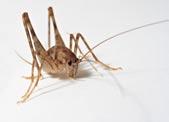

If you find that all of this “good luck” is too much for you to handle, seal up the spaces where crickets can enter your home. Caulk cracks in the founda tion and around basement windows, spaces beneath basement doors, and holes where utilities enter the home. Insecticidal baits can help control the invasion, but prevention is probably more effective. o
Camel cricket (Ceuthophilus sp.). Photo by Thegreenj, CC BY-SA 3.0 <http://creative commons.org/licenses/by-sa/3.0/>, via Wikimedia Commons.
Carol Allen describes herself as a commit table plant-a-holic. She has more than 25 years’ experience in the horticulture indus try, with a special interest in plant pests and diseases; is a Licensed Pesticide Applicator in the state of Maryland; and is an ISACertified Arborist. She can be contacted at carolallen@erols.com.
NOVEMBER 2022 WASHINGTON GARDENER 21
INSECTindex
CAROLINA CHICKADEE

eight eggs. The pair raises one brood a year. Incubation is usually about two weeks long, with another two weeks before the youngsters fledge.
Both parents feed the young. In spring and summer, insects form the bulk of their diet. Chickadees are accomplished tree-gleaners, probing into crevices and under bark. The birds are so light (.4 oz.) that they often hang upside down on a twig or leaf to pick off a tasty tidbit. Caterpillars, beetles, aphids, and spiders are on the shopping list. If the prey is a large caterpillar or moth, the little bird may bang it against a branch to subdue it taking it back to the nest.
By Cecily Nabors
Tiny, cute, and energetic, our Carolina Chickadee (Poecile carolinensis), is a favorite garden visitor. Although this bird clearly has a black cap, it’s not a Blackcapped Chickadee. The two species are hard to tell apart if they’re silent, but the Carolina is a little smaller and a little grayer, and its year-round range is more southern and lower-altitude than the Black-capped. The Carolina Chickadee is the bird we see in our area.
We certainly hear them, too: Chicka dee-dee-dee! This bird is a “name-sayer.” Its call, often followed by a chuckle, is probably the easiest bird call to learn. Voice is also a defining difference between the species. No Southern drawl here: Our Carolina Chickadee’s call is faster and higher-pitched than that of the Black-capped, and the song, which may start in mid-January, usually com prises four clear-whistled notes (fee-bee fee-bay), in contrast to the two-noted song of the Black-capped.
Carolina Chickadees commonly gather in small flocks in fall and winter, roam ing the woodlands and suburban land scapes, often foraging in company with titmice and nuthatches. On cold days, they may shiver to raise their metabo lism and body temperature. On cold nights, chickadees roost in natural shel ters. Experiments show they can lower their metabolism so they lose less heat. In the early morning, they may find a
sheltered place to “sunbathe,” welcom ing the sun’s warmth with open wings. Chickadees may be small, but they have huge personalities. Their audacity in the face of danger is marked. Dancing around a perched and semi-concealed hawk, chickadees sound the alarm. They dash toward the predator, their calls louder and faster than ever, incit ing other birds to join the fray. In most cases, the discomfited hawk will fly off to seek quieter surroundings.
As winter approaches and insects become harder to find, the diet of Caroli na Chickadees (and many other species) changes to be mostly vegetative, mainly seeds from weeds and trees, spiced by assorted berries. Local goodies include seeds of tulip trees, hemlocks, and pines, as well as elderberries and the fruits of dogwood and serviceberry trees.
Birdfeeders can be a big help in snowy winters. Chickadees come to feeders that hold suet, peanuts, or black oil sunflower seeds. Larger birds may block access, but chickadees have a winning strategy for sunflower seeds. They fly in, snatch a seed, and fly off with it, to hold it against a tree branch and hammer it open with their beaks.
Although the Carolina Chickadee is classified as a species of least concern, Breeding Bird Survey counts taken during nesting season show a slight downtrend in population. My backyard observations, from 28 years (so far) of participation in Project FeederWatch (PFW), documenting birds from Novem ber to April, show a small decrease in both frequency and numbers, which agrees with the overall PFW down-trend for chickadees in the U.S Southeast.
Being non-migratory, chickadees may stay paired for several years. Males and females cooperate to build their nests. They can drill out their own cavi ties, but often use woodpecker holes or nest boxes; mosses and a lining of hair or plant fibers make the nest cozy. The female sleeps in the nest while her mate sleeps nearby. She may lay as many as

Despite the slight reduction in num bers, with luck and a little help, Carolina Chickadees will stay with us, bringing cheer in winter and song in spring. Could anything be finer? o
Cecily Nabors is a retired software manager who has been watching and counting birds for much of her life. She publishes the GoodNatured Observations blog at cecilynabors.com.
22 WASHINGTON GARDENER NOVEMBER 2022
BIRDwatch
MARCH/APRIL
SUMMER 2009
MAY/JUNE 2007
• Roses: Easy Care Tips
• Native Roses & Heirloom Roses
• Edible Flowers
• How to Plant a Bare-root Rose
MAY/JUNE
JULY/AUGUST 2007
• Groundcovers: Alternatives to Turfgrass

• How to Pinch, Prune, & Dead-head
• William Paca House & Gardens
• Hardy Geraniums
JULY/AUGUST
SEPTEMBER/OCTOBER 2007
• Succulents: Hardy to our Region
• Drought-Tolerant Natives
• Southern Vegetables
• Seed Saving Savvy Tips
SEPTEMBER/OCTOBER
NOVEMBER/DECEMBER 2007
• Gardening with Children
• Indoor Bulb-Forcing Basics
• National Museum of the American Indian
• Versatile Viburnums
• Grow Grapes in the Mid- Atlantic
• Passionflowers • Mulching Basics • Growing Hops
FALL 2009
• Apples • How to Save Tomato Seeds • Persimmons
WINTER 2009 • Battling Garden Thugs
• How to Start Seeds Indoors
• Red Twig Dogwoods
• Unusual Edibles to Grow in Our Region
SPRING 2010
• Community Gardens
• Building a Raised Bed
• Dwar f Iris
• Broccoli
SUMMER 2010
• Fragrance Gardens
• Watering Without Waste
• Lavender
• Potatoes
NOVEMBER/DECEMBER 2005
JANUARY/FEBRUARY
MARCH/APRIL
Berries, & Persimmons
• Basic Pruning Principles
MAY/JUNE 2006
• Using Native Plants in Your Landscape
• Crabgrass
• Peppers
• Secret Sources for Free Plants
JULY/AUGUST 2006
• Hydrangeas
• Theme Gardens
• Agave
• Find Garden Space by Growing Up
SEPTEMBER/OCTOBER 2006
• Shade Gardening
• Hosta Care Guide
• Fig-growing Tips and Recipes
NOVEMBER/DECEMBER 2006
• Horticultural Careers
• Juniper Care Guide
• Winter Squash Growing
• Layer/Lasagna Gardening
JANUARY/FEBRUARY
JANUARY/FEBRUARY 2008
• Dealing with Deer
• Our Favorite Garden Tools
• Delightful Daffodils
MARCH/APRIL 2008
• Patio, Balcony, Rooftop Container Gardens
• Our Favorite Garden Tools
• Coral Bells (Heuchera)
MAY/JUNE 2008
• Growing Great Tomatoes
• Glamorous Gladiolus
• Seed-Starting Basics
• Flavorful Fruiting Natives
JULY/AUGUST 2008
• Landscaping with Ornamental Grasses
• Edible Grasses to Graze On
• Slug and Snail Control
• Sage Advice: Sun-Loving Salvias
SEPTEMBER/OCTOBER 2008
• Autumn Edibles — What to Plant Now
• Beguiling Barrenworts (Epimediums)
• Best Time to Plant Spring-blooming Bulbs
• 14 Dry Shade Plants Too Good to Overlook
NOVEMBER/DECEMBER 2008
• Outdoor Lighting Essentials
• How to Prune Fruiting Trees, Shrubs, Vines
• 5 Top Tips for Overwintering Tender Bulbs
• Harry Lauder’s Walking Stick
JANUARY/FEBRUARY 2009
• Compost Happens: Nature’s Free Fertilizer
• Managing Stormwater with a Rain Garden
• Visiting Virginia’s State Arboretum
• Grow Winter Hazel for Winter Color
MARCH/APRIL 2009 •
•
•
Your Ad Here
Are you trying to reach thousands of gardeners in the greater DC region/MidAtlantic area? Washington Gardener Magazine goes out in the middle of every month. Contact kathyjentz@gmail.com or call 301.588.6894 for ad rates (starting from $200).

The ad deadline is the 5th of each month. Please submit your ad directly to: kathyjentz@gmail.com
MAY/JUNE 2009
•
•
•
•
Advertising Index
FALL 2010
• Vines and Climbers
• Battling Stink Bugs
• Russian Sage
• Garlic
WINTER 2010
• Paths and Walkways
• Edgeworthia
• Kohlrabi
SPRING 2011
• Cutting-Edge Gardens
• Final Frost Dates and When to Plant
• Bleeding Hearts
• Onions
SUMMER 2011
• Ornamental Edibles
• Urban Foraging
• Amsonia/Arkansas Blue Star
• Growing Corn in the Mid-Atlantic
FALL 2011
• Herb Gardens
• Toad Lilies
• Sweet Potatoes
• Cool Weather Cover Crops
WINTER 2011/EARLY SPRING 2012
• Green Roofs and Walls
• Heaths and Heathers
• Radishes
SPRING 2012
• Pollinator Gardens
• Brunnera: Perennial of the Year
• Growing Yacon
SUMMER 2012
• Tropical Gardens
• Captivating Canna
• Icebox Watermelons
SPRING 2013
• Great Garden Soil
• All About Asters
• Squash Vine Borer
SUMMER/FALL 2013
• Miniature/Faerie Gardens
• Beguiling Abelias
• Growing Great Carrots
WINTER/EARLY SPRING 2014
• Ferns for the Mid-Atlantic
• Chanticleer Gardens
• Beet Growing Basics
Audubon Naturalist Society 2
Brookside Garden of Lights 17
GardenDC Podcast 15
Green Spring Gardens 2
Jentz Prints 24
MD HGIC MG Handbook 2
National Garden Bureau 16
Plant-a-Row GWA 5
Summer Creek Farm 2

Sunshine Farm & Gardens 2
The Urban Garden Book 15
Washington Gardener Back Issues 23
Washington Gardener Speakers 2
NOVEMBER 2022 WASHINGTON GARDENER 23
A big THANK YOU to all of our Washington Gardener advertisers. Please tell them you saw their ad in Washington Gardener!
us,
Next deadline: December 5 ADVERTISINGindex
White’s Nursery 2 To advertise with
please contact KathyJentz@gmail.com or call 301.588.6894 today.
DIY vs. Pro
Back
2005 • Landscape
• Prevent Gardener’s
• Ladew Topiary Gardens • Cherry Trees
into
2005 • Stunning Plant Combinations • Turning Clay
Rich Soil • Wild Garlic • Strawberries
2005 • Water Gardens • Poison Ivy • Disguising a Sloping Yard • Kenilworth Aquatic Gardens
2005 • Container Gardens • Clematis Vines • Sponge Gardening/Rain Gardens • 5 Insect Enemies of Gardeners
• Backyard Bird Habitats • Hellebores • Building a Coldframe • Bulb Planting Basics
2006 • Garden Decor Principles • Primroses • Tasty Heirloom Veggies • U.S. Botanic Garden
2006 • Top 10 Small Trees and Large Shrubs • Azaleas • Figs,
Tips
and Recipes
2007
Indoor Gardening • Daphne Care Guide • Asparagus Growing Tips and Recipes • Houseplant Propagation
2007
Stormwater Management
Dogwood Selection & Care Guide
Early Spring Vegetable Growing Tips
Franciscan Monastery Bulb Gardens
ACK ISSUE SALE! YOU CAN REQUEST A SINGLE COPY OF PRINT BACK ISSUES FOR $6 EACH OR ANY 6 BACK ISSUES FOR $24, OR ALL 40+ PRINT BACK ISSUES FOR JUST $100. PRICE INCLUDES POSTAGE AND HANDLING. PLEASE SPECIFY THE ISSUE DATE(S). ORDER MUST BE PREPAID BY CHECK OR MONEY ORDER. SEND ORDERS TO:
GARDENER, 826 PHILADELPHIA AVE., SILVER SPRING,
•
MARCH/APRIL
•
•
•
•
B
WASHINGTON
MD 20910
40+ Free and Low-cost Local
Tips
Spring
Guide
Garden
•
Edibles Planting
Testing Your
for
Fresh Start
Redbud Tree
Care
Soil
a
•
Selection and
Best
for
Viewing Spots
Virginia Bluebells
Top Easy
Summer Annuals for DC Heat
Salad
Table Project
Grow
and Enjoy Eggplant
How
to Chuck a Woodchuck
SOLDOUT!SOLDOUT!SOLDOUT! SOLDOUT!SOLDOUT!SOLDOUT! Got a Garden Question? Got a gardening question you need answered? Send your questions to KathyJentz@gmail. com and use the subject line “Q&A.” Please also include your first name, last initial, and what city and state you are writing from. Then look for your answered questions in upcoming issues.

24 WASHINGTON GARDENER NOVEMBER 2022 Jentz Prints Antique Botanical Prints for the decorator, collector, connoisseur, and art lover. Jentz Prints can be purchased at the Downtown Holiday Market from November 18-December 23, 2022.* Antique prints are affordable—most in the $10-$30 range—and they are the perfect gift idea for that plant lover in your life. And don’t forget to buy a few for yourself! For more information or to get a detailed show schedule, please contact Jentz Prints by email at UllrichJ@aol.com. *Closed Thanksgiving Day, Nov 24, and Monday, Dec 5.


















 By Brandie Bland
By Brandie Bland
























